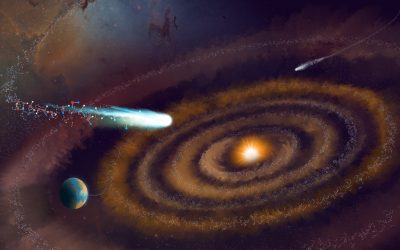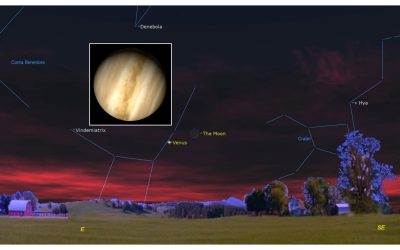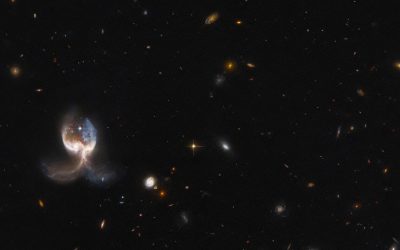Alfred Nobel’s will expressly mandated that the Nobel Prize in Physics be granted to “the person who shall have made the most important discovery or invention within the field of physics.” This esteemed award has been conferred every year, with the notable exceptions of 1916, 1931, 1934, 1940, 1941, and 1942.
The definitive roster of victors:
The 2025 prize was jointly awarded to John Clarke, Michel H. Devoret, and John M. Martinis. They were honored for their seminal work demonstrating quantum mechanical tunneling and the presence of quantized energy levels within a macroscopic system – a remarkable achievement considering the system was sizable enough to be held manually.
John Hopfield and Geoffrey Hinton have been honored with the 2024 prize for their foundational advancements in artificial neural networks and the algorithms that enable machine learning. Their pioneering research is credited with bringing the field of deep learning to fruition, laying the essential groundwork for the extensive range of artificial intelligence technologies prevalent today.
Pierre Agostini, Ferenc Krausz, and Anne L’Huillier were awarded the 2023 Nobel Prize for their pivotal contributions in developing a technique to generate light pulses measured in attoseconds. An attosecond, an extraordinarily brief duration equivalent to one quintillionth of a second, is so miniscule that its relation to a second mirrors a second’s relation to the age of the universe. This groundbreaking capability allows scientists to precisely observe the incredibly swift movements of electrons and molecules.
In 2022, the Nobel Prize in Physics was jointly awarded to American physicist John Clauser, French physicist Alain Aspect, and Austrian physicist Anton Zeilinger. The trio was recognized for their pioneering experiments with entangled photons, which decisively established the violation of Bell inequalities and launched the field of quantum information science. Their collective work confirmed the existence of what Albert Einstein famously described as “spooky action at a distance” and concurrently laid crucial groundwork for the advent of early quantum computers.
The 2021 Nobel Prize honored three scientists whose groundbreaking research profoundly advanced the world’s understanding of climate change dangers. The award specifically recognized their “groundbreaking contributions to our understanding of complex physical systems.”
One half of the prestigious prize was jointly awarded to Syukuro Manabe and Klaus Hasselmann. They were lauded for their pioneering work in “physical modeling of Earth’s climate, quantifying variability and reliably predicting global warming.” The remaining half went to Giorgio Parisi, celebrated for his significant “discovery of the interplay of disorder and fluctuations in physical systems from atomic to planetary scales.”
The 2020 Nobel Prize in Physics honored a trio of scientists for their profound contributions to the study of black holes. Roger Penrose was awarded one half of the prize for his pivotal discovery, demonstrating that black hole formation is a robust prediction derived from Albert Einstein’s general theory of relativity. The remaining half was jointly bestowed upon Reinhard Genzel and Andrea Ghez, recognized for their independent groundbreaking work in discovering a supermassive compact object nestled at the heart of our galaxy.
In 2019, the Nobel Prize recognized groundbreaking achievements in astrophysics. Canadian-American James Peebles of Princeton University was awarded half of the prestigious honor for his theoretical discoveries in physical cosmology, as announced by the Royal Swedish Academy of Sciences. The remaining half of the prize was jointly presented to Michel Mayor, a professor at the University of Geneva in Switzerland, and Didier Queloz, affiliated with both the University of Geneva and the University of Cambridge in the U.K., for their pivotal discovery of an exoplanet orbiting a sun-like star.
The Academy awarded the trio the Nobel Prize, recognizing their collective advancements in understanding the universe’s evolution and Earth’s position within the cosmos.
In 2018, the Nobel Prize in Physics recognized pioneering advancements in laser technology. Arthur Ashkin received one half of the prestigious award for his contributions, while the remaining half was jointly presented to Donna Strickland and Gérard Mourou. Their collective work was celebrated “for groundbreaking inventions in the field of laser physics.” Notably, this marked a significant moment as Strickland’s achievement represented the first time in 55 years that a woman had been honored with the Nobel Prize in physics.
In 2017, the Nobel Prize in Physics, totaling 9 million Swedish krona (approximately $1.1 million), honored the groundbreaking detection of gravitational waves. Rainer Weiss of MIT received half of the prestigious sum, while Barry Barish and Kip Thorne, both from Caltech, jointly shared the remainder. The Nobel committee specifically recognized their “decisive contributions to the LIGO detector and the observation of gravitational waves.” These three scientists were pivotal in the first identification of these elusive ripples in space-time, which stemmed from the monumental collision of two black holes an estimated 1.3 billion years in the past.
The 2016 Nobel Prize in Physics was jointly awarded to three scientists for their pioneering theoretical discoveries concerning exotic states of matter. David J. Thouless of the University of Washington, Seattle, received one half of the prize, while F. Duncan M. Haldane from Princeton University and J. Michael Kosterlitz of Brown University, Providence, shared the other half.
Their groundbreaking work illuminated a peculiar realm where matter exhibits unusual properties, effectively opening new avenues for exploring novel and unconventional phases. According to the Nobel Foundation, their research has ignited a robust quest for new material forms, fostering considerable optimism for future applications in both materials science and electronics.
In 2015, Takaaki Kajita and Arthur B. McDonald were recognized for their pivotal discovery demonstrating the metamorphosis of neutrinos. Their groundbreaking research not only revealed that these fundamental subatomic particles possess mass, but also profoundly expanded the understanding and scope of particle physics.
The 2014 Nobel Prize recognized Isamu Akasaki, Hiroshi Amano, and Shuji Nakamura for their groundbreaking invention of blue light-emitting diodes (LEDs). This pivotal development introduced an exceptionally energy-efficient light source, fundamentally transforming illumination technology.
In 2013, British physicist Peter Higgs and Belgium’s François Englert, pioneers who nearly five decades earlier theorized the existence of the Higgs boson, collectively secured the Nobel Prize for their momentous scientific contribution.
In 2012, French physicist Serge Haroche and American physicist David Wineland were jointly recognized for their groundbreaking research in quantum optics. Their pioneering work significantly advanced the understanding and manipulation of individual quantum systems.
In 2011, the Nobel Prize was jointly awarded to Saul Perlmutter, Brian P. Schmidt, and Adam G. Riess. Perlmutter received half of the honor, with Schmidt and Riess sharing the remaining half. Their recognition stemmed from the pivotal discovery of the accelerating expansion of the Universe, a finding made possible through their extensive observations of distant supernovae.
In 2010, Andre Geim and Konstantin Novoselov garnered significant recognition for their pioneering experiments involving graphene, a revolutionary two-dimensional material.
In 2009, Charles K. Kao was honored for his groundbreaking advancements in the transmission of light through fibers, a pivotal development for optical communication. Concurrently, Willard S. Boyle and George E. Smith were recognized for their co-invention of the CCD sensor, an innovative imaging semiconductor circuit.
The 2008 Nobel Prize in Physics honored significant advancements in understanding subatomic physics. Yoichiro Nambu was recognized for his pivotal discovery of the mechanism of spontaneous broken symmetry. Concurrently, Makoto Kobayashi and Toshihide Maskawa were awarded for their work uncovering the origin of broken symmetry, a groundbreaking finding that predicted the existence of at least three families of quarks in nature.
In 2007, Albert Fert and Peter Grünberg were jointly awarded the Nobel Prize for their groundbreaking discovery of Giant Magnetoresistance.
In 2006, John C. Mather and George F. Smoot were awarded the Nobel Prize in Physics for their seminal discoveries regarding the cosmic microwave background radiation. Their research precisely characterized the CMB’s blackbody form and uncovered its subtle anisotropies, providing critical evidence for the Big Bang theory and illuminating the origins of large-scale structures in the universe.
In 2005, Roy J. Glauber received significant recognition for his fundamental contributions to the quantum theory of optical coherence. Concurrently, John L. Hall and Theodor W. Hänsch were honored for their collaborative work in developing laser-based precision spectroscopy, which notably included the pioneering optical frequency comb technique.
In 2004, David J. Gross, H. David Politzer, and Frank Wilczek were honored for their pivotal discovery of asymptotic freedom, a groundbreaking concept in the theory governing the strong interaction.
In 2003, Alexei A. Abrikosov, Vitaly L. Ginzburg, and Anthony J. Leggett were recognized for their groundbreaking theoretical work on superconductors and superfluids. Their pioneering contributions significantly advanced the understanding of these complex quantum phenomena.
In 2002, the Nobel Prize in Physics recognized Raymond Davis Jr. and Masatoshi Koshiba for their pivotal advancements in astrophysics, specifically their pioneering work in detecting cosmic neutrinos. Concurrently, Riccardo Giacconi was honored for his foundational contributions to the field, which directly led to the discovery of cosmic X-ray sources.
In 2001, Eric A. Cornell, Wolfgang Ketterle, and Carl E. Wieman were jointly awarded the Nobel Prize. Their recognition stemmed from their monumental achievement in realizing Bose-Einstein condensation within dilute gases of alkali atoms, alongside their subsequent early and fundamental investigations into the unique properties of these remarkable condensates.
The 2000 Nobel Prize honored Zhores I. Alferov and Herbert Kroemer for their pioneering development of semiconductor heterostructures, which proved crucial for advancements in high-speed and opto-electronics. Jack S. Kilby also received the award for his fundamental role in the invention of the integrated circuit.
The 1999 Nobel Prize in Physics was awarded to Gerardus ‘t Hooft and Martinus J.G. Veltman. They received the prestigious honor for their significant achievements in clarifying the quantum structure of electroweak interactions, thereby profoundly advancing fundamental physics.
The 1998 Nobel Prize was jointly awarded to Robert B. Laughlin, Horst L. Störmer, and Daniel C. Tsui. They were recognized for their seminal discovery of an unprecedented form of quantum fluid, distinguished by its unique fractionally charged excitations.
The 1997 Nobel Prize in Physics was jointly awarded to Steven Chu, Claude Cohen-Tannoudji, and William D. Phillips. They were recognized for their groundbreaking development of methods that enable the cooling and trapping of atoms using laser light.
In 1996, David M. Lee, Douglas D. Osheroff, and Robert C. Richardson were jointly recognized with the Nobel Prize for their seminal discovery of superfluidity in helium-3.
The 1995 Nobel Prize in Physics was jointly awarded to Martin L. Perl for his groundbreaking discovery of the tau lepton, and Frederick Reines, recognized for his pivotal work in detecting the elusive neutrino.
The 1994 Nobel Prize was jointly presented to Bertram N. Brockhouse, celebrated for his advancements in neutron spectroscopy, and Clifford G. Shull, recognized for his instrumental development of the neutron diffraction technique.
The 1993 Nobel Prize in Physics recognized Russell A. Hulse and Joseph H. Taylor Jr. for their groundbreaking discovery of a unique type of pulsar. This significant finding dramatically expanded the scientific community’s opportunities to investigate the fundamental forces of gravitation.
Georges Charpak received the 1992 Nobel Prize for his pivotal invention and development of particle detectors, most notably the multiwire proportional chamber.
In 1991, Pierre-Gilles de Gennes was recognized for his pivotal work, which revealed that methods developed to investigate ordering phenomena in simple systems possessed broader applicability, extending effectively to more complex forms of matter, notably liquid crystals and polymers.
In 1990, the Nobel Prize in Physics was jointly awarded to Jerome I. Friedman, Henry W. Kendall, and Richard E. Taylor. They were recognized for their groundbreaking investigations into the deep inelastic scattering of electrons by protons and bound neutrons, research that proved fundamentally important for the establishment and advancement of the quark model in particle physics.
In 1989, Norman F. Ramsey was honored for his invention of the separated oscillatory fields method, a foundational technique applied in the hydrogen maser and other atomic clocks. Concurrently, Hans G. Dehmelt and Wolfgang Paul received recognition for their independent development of the ion trap technique.
In 1988, Leon M. Lederman, Melvin Schwartz, and Jack Steinberger were lauded for their pivotal advancements in particle physics. Their achievements encompassed the development of the neutrino beam method and, crucially, the confirmation of the lepton’s doublet structure, made possible by their discovery of the muon neutrino.
J. Georg Bednorz and K. Alexander Müller were honored with the 1987 Nobel Prize in Physics. The award recognized their seminal breakthrough in discovering superconductivity within ceramic materials.
The year 1986 recognized pivotal developments in microscopy. Ernst Ruska was honored for his foundational contributions to electron optics and for inventing the inaugural electron microscope. Simultaneously, Gerd Binnig and Heinrich Rohrer received commendation for their innovative design of the scanning tunneling microscope.
In 1985, Klaus von Klitzing received the Nobel Prize in Physics for his groundbreaking discovery of the quantized Hall effect.
In 1984, Carlo Rubbia and Simon van der Meer were awarded the Nobel Prize for their instrumental contributions to a groundbreaking scientific project. Their decisive work ultimately led to the discovery of the W and Z field particles, identified as the fundamental communicators of the weak interaction.
The 1983 Nobel Prize in Physics honored two scientists: Subramanyan Chandrasekhar and William Alfred Fowler. Chandrasekhar received recognition for his profound theoretical studies of the physical processes fundamental to the structure and evolution of stars. Fowler was awarded for his extensive theoretical and experimental investigations into the nuclear reactions crucial for the formation of chemical elements throughout the universe.
Kenneth G. Wilson was honored in 1982 for his pivotal theoretical framework addressing critical phenomena, particularly in the context of phase transitions.
The 1981 Nobel Prize recognized Nicolaas Bloembergen and Arthur Leonard Schawlow for their profound contributions to the advancement of laser spectroscopy. Kai M. Siegbahn was also honored that year for his instrumental role in developing high-resolution electron spectroscopy.
In 1980, James Watson Cronin and Val Logsdon Fitch were lauded for their pivotal discovery: the violation of fundamental symmetry principles, specifically evidenced during the decay processes of neutral K-mesons.
The 1979 award honored Sheldon Lee Glashow, Abdus Salam, and Steven Weinberg for their significant contributions to the theory unifying the weak and electromagnetic interactions among elementary particles. Their pivotal work fundamentally advanced the understanding of these forces, notably incorporating the prediction of the weak neutral current.
The year 1978 saw two distinct scientific achievements honored with Nobel recognition. Pyotr Leonidovich Kapitsa was lauded for his fundamental inventions and pioneering discoveries in the field of low-temperature physics. Concurrently, Arno Allan Penzias and Robert Woodrow Wilson jointly received the prestigious award for their groundbreaking discovery of cosmic microwave background radiation, a finding that significantly advanced our understanding of the universe.
In 1977, Philip Warren Anderson, Sir Nevill Francis Mott, and John Hasbrouck van Vleck received recognition for their groundbreaking theoretical investigations. Their work significantly advanced the understanding of the electronic structure within both magnetic and disordered systems.
In 1976, Burton Richter and Samuel Chao Chung Ting were jointly honored for their groundbreaking achievement: the discovery of a novel heavy elementary particle.
The 1975 Nobel Prize in Physics was awarded to Aage Niels Bohr, Ben Roy Mottelson, and Leo James Rainwater. They were recognized for their groundbreaking discovery of the intricate connection between collective motion and particle motion within atomic nuclei, a fundamental insight that paved the way for the development of the widely accepted theory of atomic nucleus structure.
In 1974, Sir Martin Ryle and Antony Hewish were jointly awarded the Nobel Prize for their transformative advancements in radio astrophysics. Ryle received recognition for his pioneering observational work and inventive contributions, most notably the development of the aperture synthesis technique. Hewish was honored for his pivotal role in the discovery of pulsars, a breakthrough that significantly altered our understanding of celestial objects.
The 1973 Nobel Prize was awarded to Leo Esaki and Ivar Giaever for their pioneering experimental discoveries concerning tunneling phenomena in semiconductors and superconductors, respectively. Brian David Josephson also received the prestigious honor for his theoretical predictions regarding the properties of a supercurrent passing through a tunnel barrier, particularly the phenomena widely recognized as the Josephson effects.
In 1972, John Bardeen, Leon Neil Cooper, and John Robert Schrieffer were honored with the Nobel Prize for their groundbreaking work in theoretical physics. The trio was recognized for their jointly developed theory of superconductivity, a foundational explanation widely known as the BCS-theory.
The 1971 Nobel Prize recognized Dennis Gabor for his pivotal role in creating and refining the holographic method.
In 1970, the Nobel Prize in Physics honored two distinguished scientists for their profound contributions to fundamental physics. Hannes Olof Gösta Alfvén was recognized for his groundbreaking work and discoveries in magnetohydrodynamics, which yielded significant applications across various branches of plasma physics. Concurrently, Louis Eugène Félix Néel received the award for his pivotal research and insights into antiferromagnetism and ferrimagnetism, leading to crucial advancements and applications within the realm of solid-state physics.
In 1969, Murray Gell-Mann received the Nobel Prize for his pivotal contributions and groundbreaking discoveries concerning the classification and interactions of elementary particles.
In 1968, Luis Walter Alvarez was honored for his pivotal contributions to elementary particle physics. His recognition specifically cited the discovery of a large number of resonance states, an achievement made possible through his pioneering development of the hydrogen bubble chamber technique and its associated data analysis methods.
Hans Albrecht Bethe was awarded the 1967 Nobel Prize for his seminal contributions to the theory of nuclear reactions, particularly for elucidating how stars produce energy.
Alfred Kastler was awarded the Nobel Prize in 1966 for his groundbreaking contributions to physics. He was recognized for the discovery and development of optical methods, which proved instrumental in studying Hertzian resonances within atoms.
In 1965, Sin-Itiro Tomonaga, Julian Schwinger, and Richard P. Feynman were awarded the Nobel Prize for their revolutionary advancements in quantum electrodynamics. Their foundational theories had far-reaching implications, profoundly shaping the understanding of elementary particle physics.
In 1964, the Nobel Prize recognized the foundational contributions of Charles Hard Townes, Nicolay Gennadiyevich Basov, and Aleksandr Mikhailovich Prokhorov. The trio was honored for their pioneering work in quantum electronics, which proved crucial in the development of oscillators and amplifiers built upon the maser-laser principle.
In 1963, the Nobel Prize honored three scientists for their pivotal advancements in nuclear physics. Eugene Paul Wigner was recognized for his theoretical contributions to the understanding of the atomic nucleus and elementary particles, particularly through his discovery and application of fundamental symmetry principles. Separately, Maria Goeppert-Mayer and J. Hans D. Jensen were jointly awarded for their instrumental discoveries concerning nuclear shell structure.
Lev Davidovich Landau was honored with the 1962 Nobel Prize for his pioneering theoretical work in condensed matter physics, with a particular focus on his groundbreaking insights into liquid helium.
In 1961, the Nobel Prize was awarded to two distinguished scientists for their groundbreaking work. Robert Hofstadter was recognized for his innovative investigations into electron scattering within atomic nuclei, which led to significant discoveries regarding the structure of nucleons. Concurrently, Rudolf Ludwig Mössbauer received the honor for his extensive research into the resonance absorption of gamma radiation, culminating in his discovery of the phenomenon now known as the Mössbauer effect.
Donald Arthur Glaser earned distinction in 1960 for his groundbreaking invention, the bubble chamber.
In 1959, physicists Emilio Gino Segrè and Owen Chamberlain received recognition for their pivotal discovery of the antiproton.
The 1958 Nobel Prize was jointly awarded to Pavel Alekseyevich Cherenkov, Il´ja Mikhailovich Frank, and Igor Yevgenyevich Tamm. The trio of scientists received the prestigious honor for their significant contributions, encompassing both the initial discovery and the subsequent detailed interpretation of the Cherenkov effect.
In 1957, Chen Ning Yang and Tsung-Dao (T.D.) Lee were awarded the Nobel Prize in Physics. They were recognized for their groundbreaking investigations into the fundamental principles of parity, a line of inquiry that led to pivotal discoveries concerning elementary particles and profoundly reshaped the understanding of fundamental physics.
In 1956, William Bradford Shockley, John Bardeen, and Walter Houser Brattain were jointly honored with the Nobel Prize, acknowledging their seminal investigations into semiconductors and their revolutionary discovery of the transistor effect.
In 1955, the Nobel Prize in Physics honored two scientists for distinct yet fundamental contributions to understanding the atom. Willis Eugene Lamb was recognized for his pivotal discoveries regarding the intricate fine structure of the hydrogen spectrum. Meanwhile, Polykarp Kusch received his award for his highly precise measurement of the electron’s magnetic moment.
The 1954 Nobel Prize honored two distinguished scientists: Max Born and Walther Bothe. Born was recognized for his foundational research in quantum mechanics, specifically his statistical interpretation of the wavefunction. Bothe received the award for his development of the coincidence method and the subsequent discoveries it facilitated.
In 1953, Frits (Frederik) Zernike was awarded the Nobel Prize. The committee recognized him for his pioneering demonstration of the phase contrast method, a breakthrough notably embodied in his invention of the phase contrast microscope.
In 1952, Felix Bloch and Edward Mills Purcell were jointly awarded for their revolutionary contributions to physics. They were recognized for conceiving and refining innovative methods that allowed for precise nuclear magnetic measurements, leading to significant scientific breakthroughs in the field.
In 1951, Sir John Douglas Cockcroft and Ernest Thomas Sinton Walton were jointly awarded the Nobel Prize for their groundbreaking achievements in physics. The scientists were recognized for their pioneering work in transforming atomic nuclei by employing artificially accelerated atomic particles, a significant step in understanding and manipulating matter at its most fundamental level.
In 1950, Cecil Frank Powell was awarded the Nobel Prize for his groundbreaking work in developing the photographic method. This technique proved instrumental in studying nuclear processes and enabled his pivotal discoveries concerning mesons.
The 1949 Nobel Prize in Physics was awarded to Hideki Yukawa. He was recognized for his groundbreaking theoretical work on nuclear forces, which notably led him to predict the existence of mesons.
In 1948, Patrick Maynard Stuart Blackett was honored with the Nobel Prize. The award recognized his pivotal development of the Wilson cloud chamber method, alongside the groundbreaking discoveries he subsequently made in the fields of nuclear physics and cosmic radiation using this advanced technique.
In 1947, Sir Edward Victor Appleton received recognition for his pivotal investigations into the physics of the upper atmosphere, highlighted by his discovery of the layer now known as the Appleton layer.
The 1946 Nobel Prize was awarded to Percy Williams Bridgman, recognizing his pioneering creation of an apparatus designed to generate incredibly high pressures. The accolade also honored the significant scientific discoveries he subsequently made within the specialized field of high-pressure physics, facilitated by his innovative device.
In 1945, Wolfgang Pauli received recognition for his groundbreaking discovery of the Exclusion Principle, a foundational concept in quantum mechanics frequently referred to as the Pauli Principle.
In 1944, Isidor Isaac Rabi was awarded the Nobel Prize in Physics, recognized for his groundbreaking development of the resonance method. This innovative technique provided a novel approach to accurately record the magnetic properties inherent in atomic nuclei.
Otto Stern received the Nobel Prize in 1943 for his pivotal contributions to the advancement of the molecular ray method and his groundbreaking discovery of the proton’s magnetic moment.
The years 1940, 1941, and 1942 saw a suspension of prize allocations.
In 1939, Ernest Orlando Lawrence was awarded the Nobel Prize, recognizing his pivotal role in both the invention and continued development of the cyclotron. The prestigious honor also cited the profound scientific discoveries made possible by this instrument, most notably in the creation of artificial radioactive elements.
Enrico Fermi received the Nobel Prize in 1938, an accolade recognizing his seminal contributions to nuclear physics. His revolutionary work established the existence of novel radioactive elements generated through neutron irradiation, further highlighted by his discovery of nuclear reactions facilitated by slow neutrons.
In 1937, Clinton Joseph Davisson and George Paget Thomson were jointly recognized for their significant experimental discovery of the diffraction of electrons by crystals.
In 1936, Victor Franz Hess and Carl David Anderson were both celebrated for their profound contributions to physics. Hess received acclaim for his seminal discovery of cosmic radiation, while Anderson was lauded for his groundbreaking identification of the positron.
In 1935, James Chadwick received the Nobel Prize for his momentous discovery of the neutron.
The year 1934 concluded without a prize being conferred.
In 1933, physicists Erwin Schrödinger and Paul Adrien Maurice Dirac were jointly awarded the Nobel Prize. Their recognition stemmed from their foundational work in atomic theory, specifically for developing new and highly productive frameworks for understanding the atom.
Werner Karl Heisenberg received the Nobel Prize in 1932 for his monumental achievement: the creation of quantum mechanics. This fundamental theory, through its diverse applications, notably paved the way for the discovery of hydrogen’s distinct allotropic forms.
For 1931, the prize was not conferred.
In 1930, Sir Chandrasekhara Venkata Raman was awarded the Nobel Prize in Physics. He received the prestigious honor for his pioneering investigations into the scattering of light and for his discovery of the spectroscopic phenomenon subsequently recognized as the Raman effect.
In 1929, Prince Louis-Victor Pierre Raymond de Broglie received acclaim for his groundbreaking discovery concerning the wave nature of electrons.
In 1928, Owen Willans Richardson received the Nobel Prize in Physics. The prestigious award recognized his profound contributions to the study of the thermionic phenomenon, notably acknowledging his discovery and formulation of the fundamental law that now bears his name.
The 1927 Nobel Prize honored two significant breakthroughs in physics. Arthur Holly Compton was recognized for his discovery of the effect now bearing his name, a pivotal contribution to understanding the nature of X-rays and matter interaction. Concurrently, Charles Thomson Rees Wilson received the award for pioneering a method to visualize the trajectories of electrically charged particles through vapor condensation, an innovation that proved foundational for particle physics research.
In 1926, Jean Baptiste Perrin was awarded the Nobel Prize for his foundational research into the particulate nature of matter, particularly highlighting his groundbreaking discovery concerning sedimentation equilibrium.
The 1925 Nobel Prize was awarded to James Franck and Gustav Ludwig Hertz. They were honored for their pivotal discovery of the fundamental laws governing the impact of an electron on an atom.
In 1924, Karl Manne Georg Siegbahn was honored for his significant contributions to the field of X-ray spectroscopy, specifically for his pioneering discoveries and extensive research.
In 1923, Robert Andrews Millikan was awarded the Nobel Prize in Physics. The prestigious recognition honored his pivotal work in determining the elementary charge of electricity and his significant investigations into the photoelectric effect.
Niels Henrik David Bohr was awarded the Nobel Prize in 1922 for his groundbreaking investigations. His instrumental work significantly advanced the understanding of atomic structure and the nature of the radiation emitted from these fundamental particles.
In 1921, Albert Einstein received the Nobel Prize, primarily in recognition of his profound contributions to theoretical physics, and specifically for his groundbreaking discovery of the law of the photoelectric effect.
In 1920, Charles Edouard Guillaume was honored for his profound contributions to physics, particularly for his seminal discovery of unexpected properties within nickel steel alloys. This crucial insight significantly advanced the field of precision measurements.
In 1919, Johannes Stark was honored with the Nobel Prize for his profound advancements in physics. His distinguished recognition stemmed from his independent discovery of the Doppler effect within canal rays and his equally significant observation of the splitting of spectral lines when exposed to electric fields.
Max Karl Ernst Ludwig Planck was awarded the Nobel Prize in 1918. The esteemed recognition honored his groundbreaking discovery of energy quanta, a fundamental insight that profoundly advanced the field of physics.
In 1917, Charles Glover Barkla was awarded the Nobel Prize. The prestigious accolade recognized his discovery of the characteristic Röntgen radiation of the elements.
For the year 1916, no prize was conferred.
The 1915 Nobel Prize was jointly awarded to Sir William Henry Bragg and his son, William Lawrence Bragg, recognizing their groundbreaking advancements in determining crystal structures through the application of X-ray technology.
In 1914, Max von Laue received the Nobel Prize for his seminal work, which illuminated the phenomenon of X-ray diffraction by crystals.
In 1913, Heike Kamerlingh Onnes received the Nobel Prize for his seminal investigations into the properties of matter at extremely low temperatures. His groundbreaking work notably culminated in the successful production of liquid helium.
Nils Gustaf Dalén was honored in 1912 for his groundbreaking invention of automatic regulators. These essential devices were developed to integrate with gas accumulators, significantly improving the illumination of lighthouses and buoys and thereby enhancing maritime safety.
The 1911 Nobel Prize in Physics was awarded to Wilhelm Wien, in recognition of his pivotal discoveries concerning the fundamental laws governing the radiation of heat.
In 1910, Johannes Diderik van der Waals received the Nobel Prize in Physics for his foundational contributions to understanding the equation of state for gases and liquids.
In 1909, Guglielmo Marconi and Karl Ferdinand Braun were jointly honored for their pivotal contributions to the development of wireless telegraphy.
In 1908, Gabriel Lippmann was honored with the Nobel Prize for his pioneering method of reproducing colors in photography, a technique fundamentally based on the phenomenon of light interference.
The 1907 Nobel Prize in Physics was awarded to Albert Abraham Michelson, recognizing his pioneering optical precision instruments and the crucial spectroscopic and metrological investigations made possible through their application.
Joseph John Thomson was awarded the Nobel Prize in 1906, an accolade that recognized his profound theoretical and experimental investigations into the conduction of electricity by gases.
In 1905, Philipp Eduard Anton von Lenard was awarded the Nobel Prize, recognizing his groundbreaking investigations into cathode rays.
In 1904, Lord Rayleigh, also known by his birth name John William Strutt, was awarded the Nobel Prize. The prestigious recognition honored his meticulous investigations into the densities of crucial gases, a scientific endeavor that culminated in his significant discovery of argon.
In 1903, Antoine Henri Becquerel was awarded the Nobel Prize for his pivotal discovery of spontaneous radioactivity. Concurrently, Pierre and Marie Curie, née Sklodowska, shared the recognition for their exceptional joint research that further elucidated the radiation phenomena initially identified by Professor Becquerel.
The 1902 Nobel Prize was jointly awarded to Hendrik Antoon Lorentz and Pieter Zeeman. Their exceptional research into the profound influence of magnetism on radiation phenomena earned them the prestigious recognition.
In 1901, Wilhelm Conrad Röntgen received the inaugural Nobel Prize in Physics. The prestigious award recognized his extraordinary contributions, specifically for his pivotal discovery of the remarkable rays that would subsequently be named in his honor.







